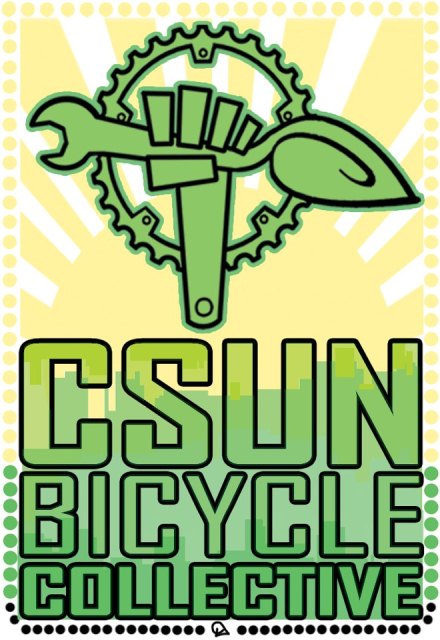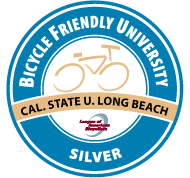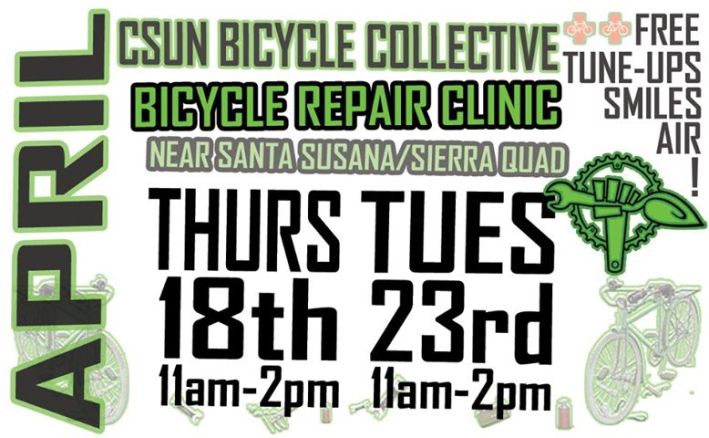When It Comes to Transportation: CSU Long Beach Can Take a Cue From… CSU Northridge?
9:51 AM PDT on September 19, 2013
Cal State Long Beach (CSULB) can certainly take a cue from Cal State Northridge (CSUN).
Firstly and unquestionably, California universities--most certainly including CSULB--have become solid examples of what it is to be a bike friendly university and business. We hold the lone platinum Bike Friendly University with those lucky people up to the north at Stanford University.
Colleges and universities are unique in a multitude of senses when it comes to biking infrastructure because of their environments. Dense, both structurally and population wise, with distinctly defined borders make bicycling infrastructure incorporation ideal. Even more, they are powerful institutions that are inherently connected to their municipality, generating money for and influence in regard to how bikes can be integrated into the local culture.
CSULB holds two Bike Friendly awards from the League of American Bicyclists: a gold award as a Bike Friendly Business as it caters to its some 3,600 employees and a silver award as a Bike Friendly University as it caters to over 36,000 students. And given CSULB's slow but steady deviation away from the "Commuter School" moniker, it would make sense that they've been awarded these.
Since 1989 (yes, you read that right), the campus awards its employees a dollar a day if they ride, walk or carpool to work through its Rideshare @ The Beach. The program began with a measly seven people partaking and has since grown to over 1,700. The campus's sustainable transportation program coordinator, Elissa Thomas, is known for saying, "You can't have a green building without a green commute."
The campus has an unquestionably ample number of bike racks and bike spaces along with lockers and showers to encourage bicycling to and from locations. To speak even further on encouraging bicycling, they have been essential partners in vastly increasing (though not quite perfectly) the amount of bike lanes surrounding the campus.
Every month, the university offers two free things: a 12-point inspection by a bicycle mechanic for your ride and a free course--Traffic Skills 101--taught by certified League Cycling Instructors. And for those who don't need to wait for a mechanic to visit campus, CSULB has three Dero Fixit air and repair stations located throughout the campus, available 24/7.
They just finished constructing the southbound Class II bike lane on West Campus Drive and Sharrow on Beach Drive that will interface with the City’s planned addition of a Class II bike lane on Bellflower Blvd.
Thomas even told me, "We are also seeking to transform the Bouton Creek flood channel from a closed-off, barren service road into a safe, open, landscaped, well-lit paved bike path that would provide a direct link from the City’s planned bike lane on Bellflower to the local YMCA, a public park, and the center of the CSULB campus."
So why, oh why, am I proclaiming that they could take a cue from CSUN, a university and business which holds no Bike Friendly awards whatsoever? A university whose students continually bemoan the lack of bicycle resources?
Because of the bold and encompassing way their students are going about changing that and not just providing benefits that help those already used to pedaling but encouraging those who might be scared to do so.
The Associated Students of CSUN noticed a multitude of problems: With one out of ever ten students biking, skating or walking to work, they noticed a complete lack of infrastructure that catered to those students, including bike racks that can accommodate only 1,098 bicycles all on the southern part of campus. It should be no shocker then that bicycles were the number one stolen item on campus.
And though they had some bonus points--the Jacaranda bike path and replacing some bike racks--they needed more.
So they've decided to make a massive bike station, the Matador Bike Shop. It sounds simple minded and in a sense, it very much is--and that is what precisely provides the idea its strength. Rather than pinpointing specifics--we need an additional bike path, we need another rack--they have decided to create a cultural hub that will encourage a larger bicycling community which will in turn, hopefully, put down pressure to up the infrastructure. Rather than depending upon the university, the Shop will "build relationships with bicycle businesses and nonprofit bicycle co-ops around CSUN, government entities, other university run bicycle program, and other entities on campus."
They are creating a community before infrastructure. And this is where I say CSULB take its cue.
CSULB essentially did it vice versa--and in all honesty, at this point in the game, I think its a moot point to discuss what should come first, community or infrastructure. But what is lacking at CSULB is that community hub.
For the most part, the efforts (which are indeed awesome) cater to a very niche crowd: established bicyclists or those willing to go out of their way to figure out how to access it all. In simple terms: there is no hub. There is no 49er Bicycle Shop.
I want that silver award upped to a gold, I'm not gonna lie. Perhaps it's my inner 49er competitiveness coming out but I fully admit it. And while the infrastructure is solid, there is no place where the person--we've all been there--who sees someone who knows it all has a place to comfortably figure it out. My first experience was the Bike Station in Long Beach and, frankly put, without it, I am not sure if I would have so comfortably hopped onto a bike on the road. For most, it is the bike shop, which has a cultural identity attached to an educational component: it's a hangout spot where you learn more.
And without this, there are going to be too many students who see the confident, experienced bicyclist--masterfully using the Dero, hopping into traffic without the blink of an eye, knowing precisely where things are--and pull their car keys out because they don't even know where to begin.
C'mon, Northridge gets it. I am sure we can do the same.
Stay in touch
Sign up for our free newsletter
More from Streetsblog Los Angeles
Metro Board Funds Free Student Transit Pass Program through July 2025
Metro student free passes funded another year - plus other updates from today's Metro board meeting
Eyes on the Street: New Lincoln Park Avenue Bike Lanes
The recently installed 1.25-mile long bikeway spans Lincoln Park Avenue, Flora Avenue, and Sierra Street - it's arguably the first new bike facility of the Measure HLA era







